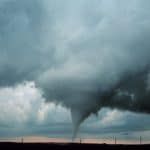The problems with the Department of Homeland Security
By Laura H. Kahn | June 9, 2009
In response to 9/11, Congress created the Department of Homeland Security (DHS), a massive cabinet-level agency that consolidated 22 departments and agencies and almost 200,000 federal employees. Its goal was to improve domestic security coordination and communication. The restructuring was the largest reorganization of the federal government since the late 1940s, when President Harry Truman and Congress created the CIA, Defense Department, and National Security Council.
Although reorganizing bureaucracy is a typical governmental response to a disaster such as 9/11, in this case, growing evidence suggests that placing so many disparate agencies and departments under one roof has created more problems than it has solved. So with a new administration in place, now is the time to reexamine Homeland Security’s structure and make the necessary changes to ensure it can effectively prevent future terrorist attacks and mitigate the results of natural disasters.
Despite spending millions of dollars on massive emergency response exercises, the Department of Homeland Security and FEMA are still considered poorly prepared.”
Many of the challenges that Homeland Security faces derive from its broad (read: ill-defined) mandate. Currently, DHS oversees Citizenship and Immigration Services; the Coast Guard; Customs and Border Protection; the Domestic Nuclear Detection Office; the Federal Emergency Management Agency; the Federal Law Enforcement Training Center; Immigration and Customs Enforcement; the National Cyber Security Center; Secret Service; and Transportation Security Administration. And this list doesn’t include the directors, secretaries, undersecretaries, and others housed in the department. Nor does it take into account the external agencies and departments Homeland Security must coordinate with (the CIA, FBI, DEA, and Health and Human Services, among others).
Such a veritable smorgasbord of bureaucracy has led to continual inter- and intra-agency conflict. For example, Homeland Security and the Justice Department, which includes the FBI and DEA, both are tasked with gathering intelligence and sharing it with state and local law enforcement officials. It’s no surprise then that there are turf battles. The response to Hurricane Katrina illustrated the interagency rift vividly, as DHS and FBI officials fought over which would play a lead role in safety and law enforcement. The most sensible solution would be for DHS to get out of the intelligence business, giving the Justice Department sole responsibility for intelligence gathering, analysis, and transmittal of safety information to state and local law enforcement officials, thereby hopefully reducing interagency conflict, competition for funding, and leadership battles.
Cyber security suffers from similar interagency problems. Homeland Security is responsible for most of it, but the National Security Agency (NSA) is responsible for military cyber security specifically and would like to take some of Homeland Security’s cyber security duties. (See “NSA Dominating Cybersecurity; DHS Official Quits, Warning of Bad Strategy“.) Notably, cyber security is considered such an important issue that President Barack Obama recently created an office of cyber security and is expected to appoint a “cyber czar” who will report directly to him and who will sit on the National Security Council. Whether this position will create further conflict and how it will relate to the Homeland Security cyber security chief remains to be seen. But we should recall that a recent DHS cyber security chief resigned because of turf battles and funding difficulties. Although it isn’t entirely clear which agency should have primary responsibility for cyber security, given the decentralized and amorphous nature of the internet, it might be beneficial to have oversight responsibility spread across several different agencies so that they can each provide their unique expertise.
A third conflict is between FEMA (part of Homeland Security), the Office for Domestic Preparedness (part of the Justice Department), and the Department of Health and Human Services (part of the cabinet). Homeland Security and FEMA are responsible for responding to disasters such as hurricanes and terrorist attacks; but despite spending millions of dollars on massive emergency response exercises, they are still considered poorly prepared because of weak coordination with state and local governments and a broken national preparedness drill system. (See the New York Times op-ed, “All Disasters Are Local“.) An April Government Accountability Office report found, among other deficiencies, that FEMA lacks a strategic plan for its national preparedness system that specifies clear and measurable objectives. Nor has it established a program-management plan that defines how preparations will be planned, executed, monitored, and controlled in coordination with other federal departments and agencies.
It’s worth pointing out that FEMA had been a cabinet-level post under President Bill Clinton. After 9/11, the Bush administration placed it under Homeland Security’s control, a demotion that wasn’t well-received by FEMA staffers. Coincidentally, when FEMA engulfed the National Disaster Medical System (a program consisting of 7,000 volunteer physicians, nurses, and other medical personnel originally housed in Health and Human Services), staff morale plummeted and many people left their jobs. (See “Brown’s Turf Wars Sapped FEMA’s Strength“.) On a happier note, a 2006 congressional act restored the system back to Health and Human Services. So it isn’t impossible for FEMA to be restored to its original status, a move that would allow it to be a smaller and more effective response unit.
These stories boil down to one point: Let the original agencies do what they’re good at. That way, Homeland Security can be responsible for those vital areas in which substantial gains in national security have yet to be made–border and port security; transportation, commerce, and infrastructure security; and nuclear and chemical material security. (See “DHS Strains as Goals, Mandates Go Unmet“.)
Congress is watching closely to determine whether or not DHS is making such gains–probably too closely, as DHS is buried in excessive congressional oversight. Almost 80 congressional committees and subcommittees currently oversee Homeland Security. This fragmented system guarantees that Homeland Security officials spend more time preparing for committee meetings than performing their day-to-day duties. (A sampling of the many congressional appearances that Homeland Security officials must make each month.) A 2004 joint report by the Center for Strategic and International Studies and Business Executives for National Security suggests that each chamber of Congress establish a single committee responsible for Homeland Security oversight in order to cut down on the amount committee meetings DHS officials currently attend. These committees would have a small cadre of expert staffers who could monitor the department and write legislation relevant to homeland security requirements. Until Congress undertakes this restructuring, Homeland Security will not reach its full potential.
Clearly, some oversight is still necessary. A November 2008 Government Accountability Office report found that almost one-third of Homeland Security’s major investments received funding without having the appropriate verification that they met mission requirements and needs. The report also found that as of July 2008, more than one-quarter of major Homeland Security investments were poorly planned and poorly performing. For example, more than $500 million were spent on 18 investments–including an advanced spectroscopic portal program for the Domestic Nuclear Detection Office; a Computer Emergency Readiness Team for the National Protection and Program Directorate; and a National Bio-Surveillance Integration System for the Office of Health Affairs–that lacked an approved mission needs statement. (See p. 27 of “Billions Invested in Major Programs Lack Appropriate Oversight“.)
The myriad problems at DHS means that the United States is no safer in many areas than it was before 9/11. In a perfect world, Homeland Security would be responsible for prevention–securing U.S. borders, ports, infrastructure, transportation, commerce, and hazardous materials. It wouldn’t duplicate other agencies’ missions nor attempt to be a response force, as it does now. Until that happens, however, the country will be ill-prepared for a future terrorist attack or natural disaster.
Together, we make the world safer.
The Bulletin elevates expert voices above the noise. But as an independent nonprofit organization, our operations depend on the support of readers like you. Help us continue to deliver quality journalism that holds leaders accountable. Your support of our work at any level is important. In return, we promise our coverage will be understandable, influential, vigilant, solution-oriented, and fair-minded. Together we can make a difference.
Topics: Columnists















